Rob Roy, Scottish Legend.
→Political and Religious Background
Rob Roy’s life and exploits should be interpreted against a backcloth of religious changes which in turn had triggered a change in the Royal Family. By the late 16th century both Scotland and England had officially converted from Catholicism to Protestantism. King James VII of Scotland/James II of England was exiled in 1688 because of his Catholic leanings and replaced by the Protestant, King William. However, the exiled James retained a core support in England, Ireland and Scotland, a group known as ‘Jacobites’ due to ‘Jacob’ being the Latin term for James. Between 1689 and 1746 there were three credible attempts to win back the throne for the Jacobite cause, all of which ultimately failed. Rob Roy was a Jacobite supporter.
→Key events in Rob Roy’s life
- Born in 1671 at Glengyle at head of Loch Katrine. He grew to develop a strong physique, was well educated with skills in letter writing. His cousin, Dr. James Gregory was Professor of Medicine at Aberdeen University. It is likely that Rob’s first language was Gaelic.
- Age 18, and together with his father, a Lieutenant Colonel, Rob for fought for the victorious Jacobite army at the Battle of Killiecrankie in 1689.
- Became acting head of Clan MacGregor in 1693 at a time when the clan was officially proscribed. He adopted the surname ‘Campbell’.
- Married in 1693, a union which produced four sons.
- Became wealthy through dealing in stolen cattle.
- The most defining act in his life occurred in 1711 when Rob borrowed one thousand pounds from the Duke of Montrose, a very large sum at the time, to finance a cattle transaction. Unfortunately, the lieutenant he entrusted to carry out the deal absconded with the funds forcing Rob to default and an action against for embezzlement by the Duke. In 1712 Rob was bankrupted, his lands siezed by the Duke and his wife and family forcibly evicted. From thereon, Rob went into hiding as an outlaw and ran a guerrilla campaign against the property and employees of the Duke of Montrose entailing kidnapping and theft. At this time Rob was under the protection of the Duke of Argyll, an implacable foe of the Duke of Montrose.
- Joined the Jacobite uprising of 1715. Was present at the Battle of Sheriffmuir but did not actively participate, possibly because the Government forces were led by the Duke of Argyll, his protector. However, he was still attainted for High Treason and became an outlaw.
- Fought for the Jacobite cause at the Battle of Glenshiel in 1719. Here, the Jacobites suffered a defeat and Rob incurred non-fatal wounds.
- By 1725 Rob had been captured and imprisoned in London pending deportation. However, his notoriety helped by Daniel Defoe’s book ‘Highland Rogue’ influenced King George I to grant a Royal pardon following which Rob returned to Inverlochlarig Beag, Glen Balquhidder where he later died on December 28th 1734, age 63 years.
→Rob Roy, the Legend
Books and films have helped to stimulate interest in Rob Roy and his exploits, viz:
- Sir Walter Scott’s Rob Roy, published 1817.
- Film, Rob Roy, the Highland Rogue, 1954.
- Film, Rob Roy, 1995 starring Liam Neeson.
There is a ‘Rob Roy Trail’ extending about 77 miles/124km which passes through some stunning scenery and enables visitors to connect with key events in Rob’s life. The trail runs from Blair Atholl in Central Scotland to Balquhidder in the south passing through Killiecrankie, Pitlochry, Aberfeldy, Ardtainaig, Killin, Lochearnhead, Strathtyre, Callander, Aberfoyle and Drymen. Visitors can view the family grave site at Balquhidder Kirk in Stirlingshire. Other key sites include Loch Katrine, Loch Lomond, Glengyle and Inversnaid.
Loch Lomond-North
Birks of Aberfeldy
Falls of Dochart at Killin
Inversnaid Falls
Approaching Strathtyre on Rob Roy Way.
Balquhidder Kirk

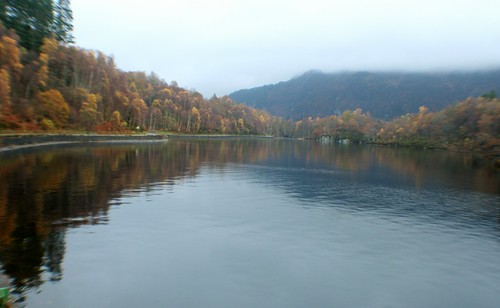
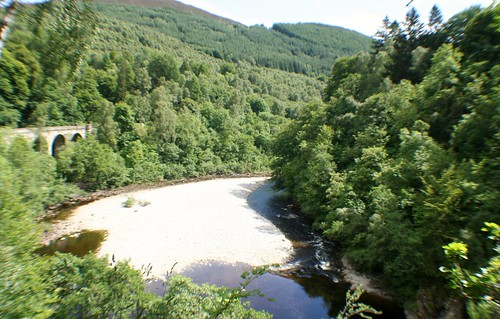
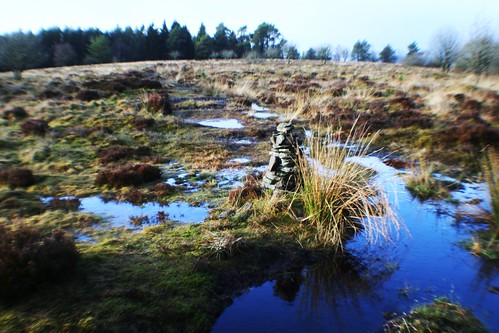


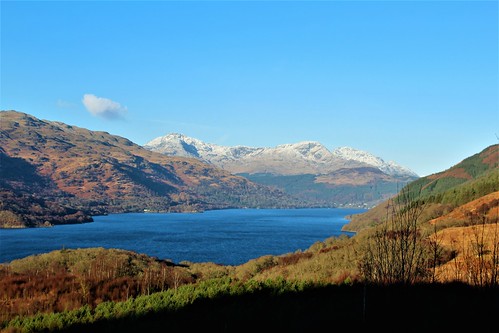


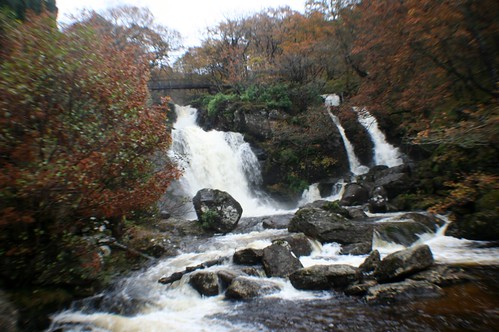



Comments
Post a Comment